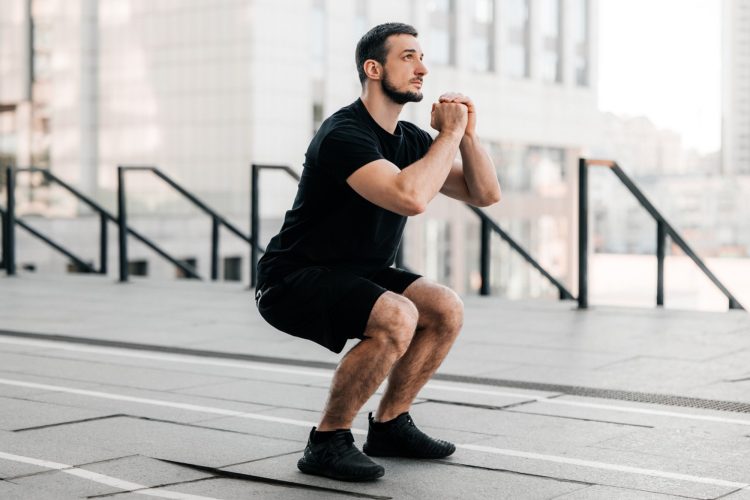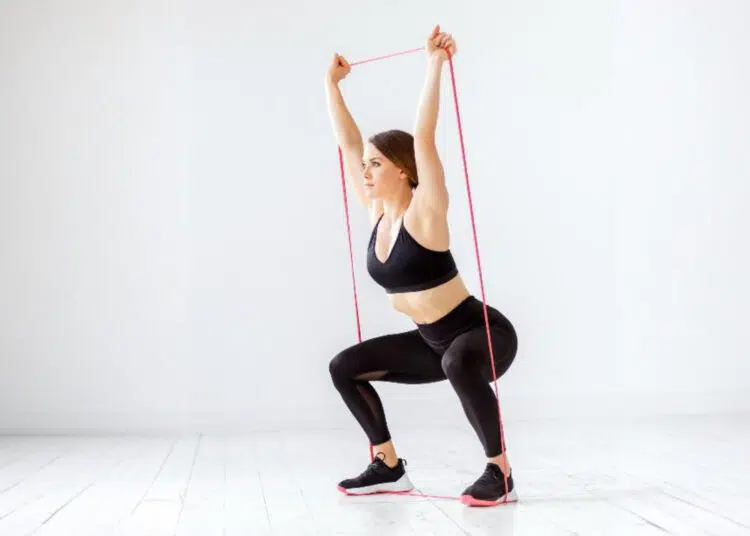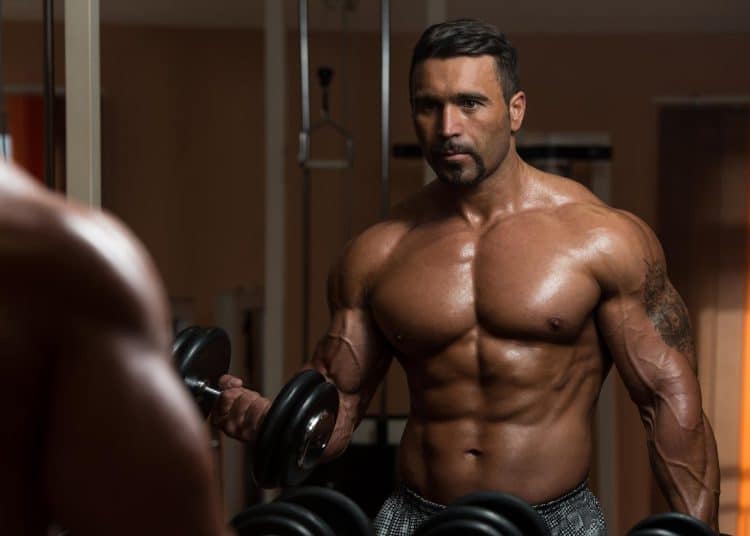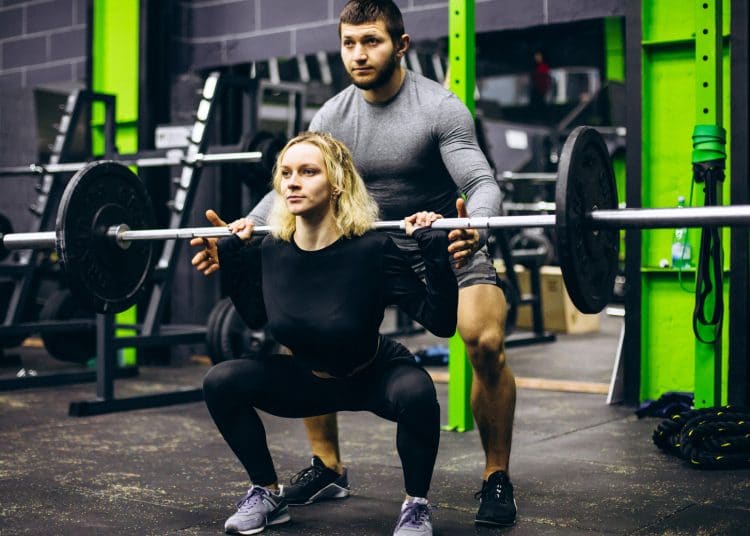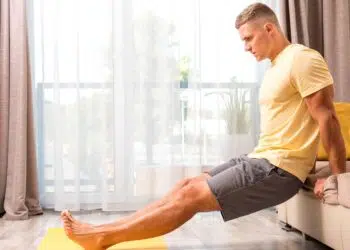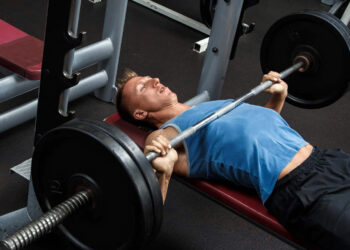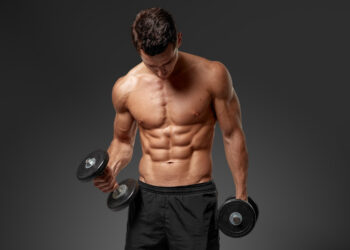Have you ever wondered why there is such a mad rush in gyms on the first day of January? It’s primarily because people turn into couch potatoes during the winter months toward the end of the year. After all, there are only a few things as comforting as drinking hot chocolate in a cozy blanket.
As a personal trainer who has spent the majority of the last 17 years in gyms, I can attest that the colder weather and shorter days during the winter lead to a lack of motivation to exercise.
Most people do not want to leave their homes and travel to the gym in extreme cold, leading them to abandon their fitness objectives.
Make no mistake, this isn’t limited to gyms. Outdoor activities like running, swimming, and hiking are the worst hit. Besides the winter sluggishness, training outdoors in winter months significantly increases injury risk due to a lack of visibility and slippery surfaces.
In this article, I’ll take you over three types of indoor workouts — bodyweight, resistance bands, and cardio — that require minimal equipment but will help you attain and maintain peak physical and mental conditioning. I’ll also share some tips that’ll help you keep motivated during the chilly winter season.
Bodyweight Circuits: Your In-Home Gym
Level Up Your Fitness: Join our 💪 strong community in Fitness Volt Newsletter. Get daily inspiration, expert-backed workouts, nutrition tips, the latest in strength sports, and the support you need to reach your goals. Subscribe for free!
As a personal trainer, bodyweight workouts are my go-to as they are versatile enough and can be adapted for people of varying experience levels. Furthermore, since they do not require any equipment, you can do them anywhere at any time.
There are countless bodyweight exercise exercises that you can choose from depending on the space available.
Now, let’s get to the fun part. I’ll give you three different bodyweight workouts that you can do in the comfort of your living room. Choose the one that suits your current fitness level and give it your best.
Beginner Circuit:
Given below is a novice-friendly bodyweight HIIT workout. Complete one round of this circuit.
| Exercises | Reps |
| Air Squats | 10 |
| Lunges | 10 |
| Incline Push-Up | 10 |
| Plank | 30-second hold |
| Crunches | 15 |
Even though most of these exercises are excellent for beginners, feel free to switch them depending on your experience level. For instance, you can change the air squats with chair squats and conventional planks with kneeling planks.
Intermediate Circuit:
Once you gain more experience and start to feel more comfortable with the beginner workout, it’s time to move to the intermediate circuit to ensure consistent progress. This circuit involves more dynamic movements for increased intensity.
Perform three rounds of this circuit:
| Exercises | Reps |
| Jump Squats | 10 |
| Burpees | 10 |
| Tricep Dips | 10-12 |
| Mountain Climbers | 30 seconds |
| Planks with Leg Raise | 30 seconds |
I recommend beginners work with an experienced personal trainer as this will shorten the learning curve, improve exercise efficiency, and significantly lower injury risk.
Advanced Circuit:
How do you know you are an advanced trainer? Try this workout.
Perform five rounds of this circuit:
| Exercises | Reps |
| Plyometric Push-ups | 8-10 |
| Pistol Squats | 5 per leg |
| Handstand Holds | 30-second |
| Superman Plank | 30 seconds |
| Hollow Body Hold | 30 seconds |
This circuit has high-skill exercises like pistol squats and handstand holds, which require a ton of practice to be able to perform correctly. Feel free to use a chair or TRX band for assistance during the pistol squats and use a spotter’s help to get into the handstand position.
Even though bodyweight workouts do not involve additional resistance, you should not overlook the importance of a thorough warmup. Dynamic warmup exercises like arm circles, jumping jacks, and leg swings increase the blood flow to the target muscles, improving your training performance and limiting the risk of getting hurt.
Similarly, you must spend five to 10 minutes cooling down after a workout using static stretches as they can help flush out the metabolites from the tissues, kickstarting the recovery process.
Resistance Bands: Small Tool, Big Results
As you gain more training experience, resistance band workouts should be the next step. These bands provide just enough resistance, variety, and intensity to stimulate and ignite new muscle tissue growth.
Plus, they are compact enough to pack in your luggage and take with you while you are traveling or when a trip to the gym feels like a trek to the North Pole.
Resistance bands offer a unique resistance profile. Unlike free weights, resistance bands offer constant tension throughout the entire range of motion (ROM), leading to a greater time under tension, muscle stimulation, and growth. (1)
Choosing the Right Resistance Band
Resistance bands come in different shapes and sizes, making them suitable for exercisers at varying experience levels. You must pick the right type of resistance band according to the workout and your experience level to make the most of these workouts.
The three main types of resistance bands are loop, therapy, and tube bands.
Lower Body Workout
In contrast to popular opinion, you can build a pair of jacked legs using nothing but resistance bands.
Prioritise drilling the correct movement mechanics before increasing the number of reps per set. Focus on deep mind-muscle connection and contracting the target muscles throughout the ROM.
| Exercise | Sets | Reps |
| Banded Squat | 3 | 10-12 |
| Lunge | 3 | 10-12 |
| Hip Abduction | 3 | 10-12 |
| Glute Bridge | 3 | 10-12 |
| Donkey Kick | 3 | 10-12 |
While performing stationary lunges, wrap the resistance band around a dumbbell’s handle and hold each end in your hands. Wrap one end of the resistance band around a sturdy anchor point like a pole while performing donkey kicks.
During the squats, stand on top of the resistance band, using a shoulder-width stance, and hold each of its ends in your hands.
Upper Body Workout
This workout ensures optimal upper-body muscle activation:
| Exercise | Sets | Reps |
| Chest Press | 3 | 10-12 |
| Bicep Curl | 3 | 10-12 |
| Tricep Extension | 3 | 10-12 |
| Bent-Over Rows | 3 | 10-12 |
| Shoulder Press | 3 | 10-12 |
Perform the chest press while lying on the floor with the resistance band wrapped around your back. If you have a shorter resistance band, you can anchor it to a pole at waist height to perform the shoulder presses.
Level Up Your Fitness: Join our 💪 strong community in Fitness Volt Newsletter. Get daily inspiration, expert-backed workouts, nutrition tips, the latest in strength sports, and the support you need to reach your goals. Subscribe for free!
Core Workout
I get some of the most intense pumps when using resistance bands. It goes to show that you do not need heavy weights to carve a superhero midline.
| Exercise | Sets | Reps |
| Russian Twists | 3 | 10-12 |
| Crunch | 3 | 10-12 |
| Anti-Rotation Press | 3 | 10-12 |
| Standing Pallof Press | 3 | 10-12 |
| Woodchopper | 3 | 10-12 |
Cardio Routines: Get Your Heart Pumping Indoors
A healthy heart is indispensable when it comes to overall health and well-being.
Contrary to what most people think, you do not need expensive cardio equipment to burn calories and improve your aerobic and anaerobic endurance and stamina. Bodyweight exercises are effective enough to get you the desired results.
Besides strengthening your heart, cardiovascular Training can increase your lung capacity, boost metabolism and mood, and lower stress levels.
All these benefits make cardio an excellent option to start or wind up your day.
Workout Options:
Below are some incredibly effective bodyweight cardio exercises to get you into peak shape:
1. Jumping Jacks
This is one of the first exercises most of us learn to perform. It is an excellent way to get your heart rate up and burn that stubborn belly fat.
- Beginner: 3 x 10-15
- Intermediate: 3 x 20-30
- Advanced: 3 x 30-50
2. Burpees
Burpees are one of the most brutal (but effective) full-body exercises that’ll help you burn off the extra calories, tone your muscles, and boost your endurance.
- Beginner: 3 x 5-8
- Intermediate: 3 x 10-15
- Advanced: 3 x 15-20
3. Stair Climbing
Stairs are an unassuming cardio training tool accessible to most at their home. They can help strengthen your heart, legs, and glutes.
- Beginner: 5-10 minutes
- Intermediate: 15-20 minutes
- Advanced: 20-30 minutes
4. Jump Rope
This is one of the best exercises to burn calories and improve hand-eye coordination. Start slow and increase the difficulty as you gain more experience. There are several variations you can adopt, such as criss-cross jumps and double and triple unders.
- Beginner: 30 seconds of jumping followed by 30 seconds of rest (10-15 minutes)
- Intermediate: 60 seconds of jump intervals
- Advanced: Aim for longer unbroken jump sessions of 20-30 minutes
5. Dance Workouts
Dancing is one of the best ways to stay fit indoors during the winter months. Plus, there are enough styles for everyone.
- Beginner: 15-20 minutes
- All Levels: 20-60 minutes
Staying Motivated During Winter
Here are a few tips to keep you motivated to exercise during the chilly months:
Set Realistic Goals
According to the American Council on Exercise (ACE), setting SMART (specific, measurable, attainable, relevant, and time-bound) goals is key to attaining your physique and fitness objectives.
But how do these SMART goals translate to training in the winter months?
If you have never exercised in the cold, you should not aim to train every day of the week. Begin with a more attainable goal, like training for 10 minutes three days a week.
You should have a big goal and then break it down into smaller objectives to make them feel more attainable. Also, ticking off a goal can be incredibly rewarding and motivating.
Sample SMART Goal: I am going to lose 30 pounds in the next year by exercising at least 20 minutes most days of the week and only eating a dessert once per week.
Find a Training Partner
Training in the gloomy winter weather can feel lonely and depressing. This is also one of the biggest reasons people quit before achieving their fitness objectives.
I recommend finding a training partner with similar fitness goals.
Most cities have vibrant fitness clubs that you can join. These will keep you accountable and motivated. Furthermore, if you train at home, you can have your better half or kids exercise with you to keep things interesting.
Create a Schedule
Staying consistent is one of the biggest challenges when training at home. Many people tend to exercise at odd hours during the day and usually end up skipping the workout due to a lack of time.
You must set aside a particular time in the day for exercise. Treat it like you would treat an important meeting.
Embrace Variety
Sticking to the same exercise routine for an extended period can get boring.
I have my personal training clients switch between different exercise modalities and workout styles to keep things exciting. This also ensures that your body does not get used to your workout, which can help avoid training plateaus.
Coach Tip: Incorporate progressive overload into your exercise via more challenging exercises to ensure consistent progress.
Reward Yourself
Avoid obsessing over your workouts and engaging in overly restrictive diets. Instead, I encourage you to celebrate small victories and reward yourself with things that you enjoy.
For instance, treat yourself to your favorite cheesecake after hitting a new PR. This might sound counterintuitive, but it will pay dividends in the long run.
Conclusion
This comprehensive guide will help you beat the winter blues and get in the best shape of your life using minimal equipment. Most newbies should begin with performing these workouts two to three times a week and adjust the training volume (sets and reps) as they progress.
Learn to listen to your body. Discontinue the workout if something feels unnatural or uncomfortable. Consult your healthcare provider if you’re experiencing pain, and it doesn’t subside within a few days. Like every other training program, you must stay consistent, dedicated, and disciplined to get the best bang for your buck.
Stick to these training regimens for the entire winter, and you’ll be on your way to achieving your best physique.
If you have any questions about the workout routines explained in this article, post them in the comments below, and I’ll be happy to help!
References:
- Burd NA, Andrews RJ, West DW, Little JP, Cochran AJ, Hector AJ, Cashaback JG, Gibala MJ, Potvin JR, Baker SK, Phillips SM. Muscle time under tension during resistance exercise stimulates differential muscle protein sub-fractional synthetic responses in men. J Physiol. 2012 Jan 15;590(2):351-62. doi: 10.1113/jphysiol.2011.221200. Epub 2011 Nov 21. PMID: 22106173; PMCID: PMC3285070.

